SOLIDWORKS & MCAD Customer Story: Feel Like Dancing with SolidWorks
Feel Like Dancing with SolidWorks
“Do you have a 3D drawing file you can send me?” asked the sales rep for a local plastics manufacturer.
“Yes I do, can you use a Google Sketchup file?” I answered nervously.
“Never heard of that, sorry – I need something like SolidWorks or an STL file…” He replied.
“It took me a few weeks to learn Sketchup and I had a lot of trouble at times…do you think I can learn SolidWorks on my own or should I pay somebody to make my file?” I countered.
“You shouldn’t have any trouble with SolidWorks. It’s pretty easy to use and the most reasonably priced…it was easy for me to learn anyway.” he said.
Truthfully I didn’t want to use a free software like Sketchup. The massage tools I invented are world-class products and I’ve always dreamed about being the best in the world at what I do. So I wanted to go with the industry standard software to model my products. But I was scared. Could I learn to use a big-league professional tool on my own in a short period of time?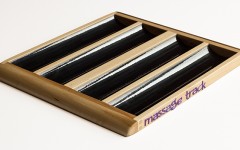
Foolishly I had told my wife that I could be selling my massage tools in six months. But I’m a perfectionist and spent a lot of time crafting the first models from wood in my shop. Next, I used Smooth-on plastics to create molds and then cast prototypes from polyurethane. They worked beautifully!
The prototypes I made in the garage were being tested by local massage therapists and physical therapists. Their glowing reports confirmed my own gut feelings that I had a winner.
For over a year, I had been using the Body Track every morning to loosen my back. I no longer touched the foam roller which had previously been my best friend. A little more than a year prior, the foam roller had failed me when I pulled a muscle in my back. Normally, my muscle pulls healed in a few days, but on this occasion, my back just kept getting worse.
It got to the point that I could not sit at a desk to work. I had great trouble walking. Driving to a massage therapist was extremely difficult. Two deep tissue therapy sessions were helpful, and I was sure daily therapy would heal my injury but didn’t have the time or the money.
So I was rolling around on the floor in desperation with a pair of loose tennis balls – which is not easy! But I finally got them in the right place and knew instantly that I’d heal quickly if I built a gadget to position the balls for me. It worked. A week after I started using my first prototype, I was 80% recovered and back to 100% just two weeks later and felt like dancing for joy!
Now I had to find out what it would cost to have my Body Track invention mass-produced.
So, in spite of my fears, I dove into SolidWorks. At first I was a little upset that I wasted weeks of time learning how to use Sketchup, but in reality, that’s the life of an entrepreneur – you go down a lot of rabbit holes before you find the right path.
I learned how to use SolidWorks watching YouTube videos and relying on the SolidWorks online documentation. Every time I got stuck, I worried. There was always the fear that I might one day hit an obstacle I couldn’t overcome. But every time, I found the solution I needed (often in the forums) and each time felt like doing a little happy dance, a vision of myself as conquering hero running around in my head. So, one victory at a time, my Body Track drawing came to life.
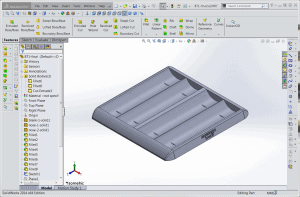

Sending out my file to manufacturers was exciting. It filled me with pride to have created the design myself. The formats requested by manufacturers varied, but I was always able to export to a format they could use.
I got manufacturing quotes. I had a 3D print made to test some design tweaks. It helped me solve some design questions that really could not be discovered any other way. I spent a lot of time checking prices for 3D printing in Boulder and even attended a meet up at a hacker space and nobody could make a print as large as I wanted.
I would’ve had to glue two pieces together if I went with any local printer. And, the cost for the local prints was higher – MCAD Technologies really came through for me and was the best solution (see photo).

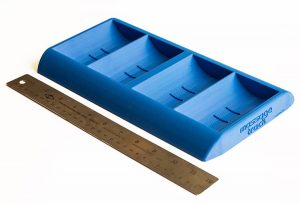
I created a design for my Neck Track product also. I used SolidWorks extensively in the patenting process to get my designs into Photoshop to make patent drawings.
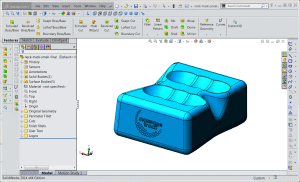

Eventually, I had a professional look over my Neck Track design and make some small changes that were a little above my pay grade. I was worried that he would say my design was too amateur and would want to start from scratch. But no, he was able to use my design without any trouble!
Armed with my garage-made prototypes, manufacturing quotes and the SolidWorks rendering of the Body Track, I was able to put together a dynamite Kickstarter project and raised $72,000 from nearly 850 backers.
My Kickstarter backers loved their Massage Track kits and posted reviews like “Hi Eric, maaan! This is the best thing ever! Thanks for this invention. I’m never going to be at a loss as to how I can get a deep tissue massage anymore as this thing replaces massage appointments, unavailability, variable quality/service. It’s so lightweight it goes with me everywhere I travel. I thank you so much!”
As I write this, my tools are selling on the Massage Track website and Amazon and the business is growing. To see the tools in action, check out our massage videos. I have a couple more inventions in the pipeline and I’m dreaming about the day I can start creating the 3D designs in SolidWorks because it’s one of the most enjoyable steps in getting my inventions out to the people who need them!
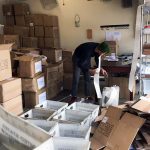


Story written by Eric Jeffrey from Massage Track

 Blog
Blog